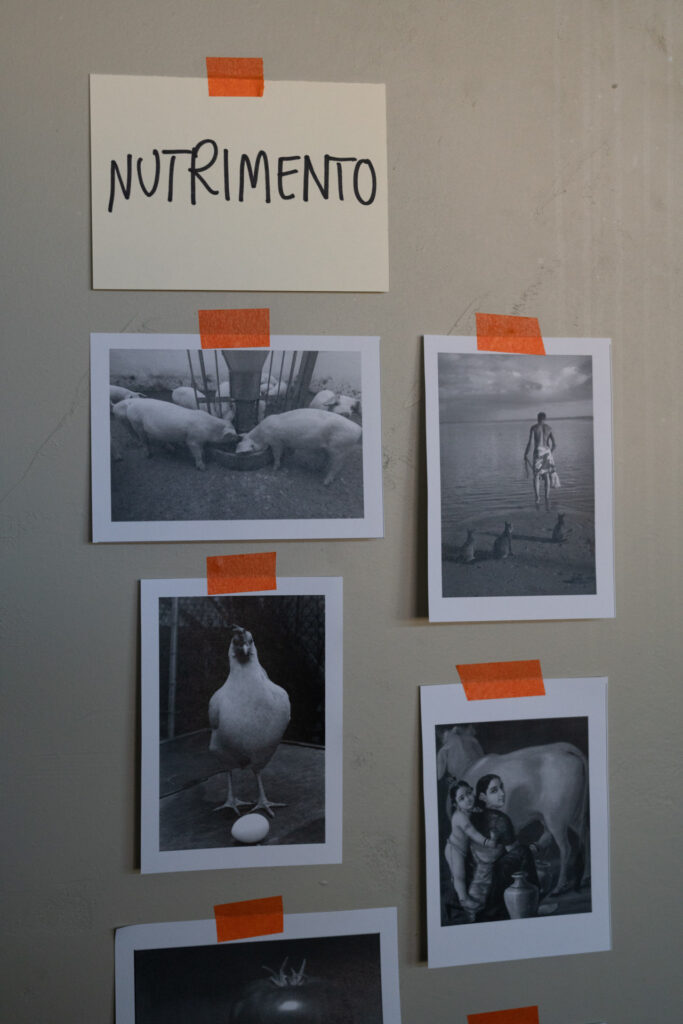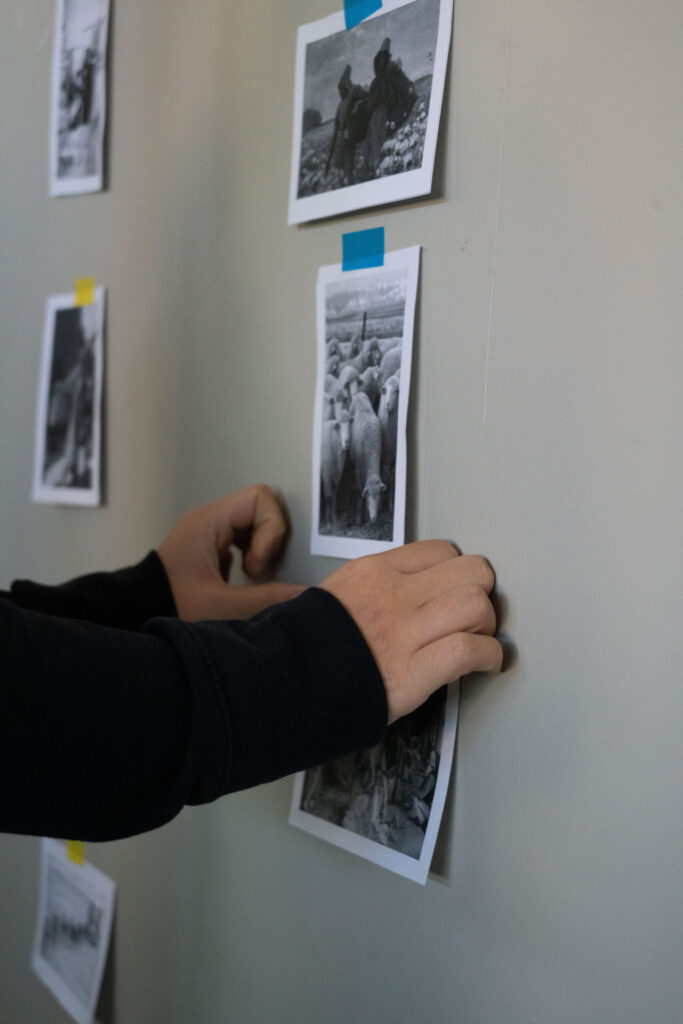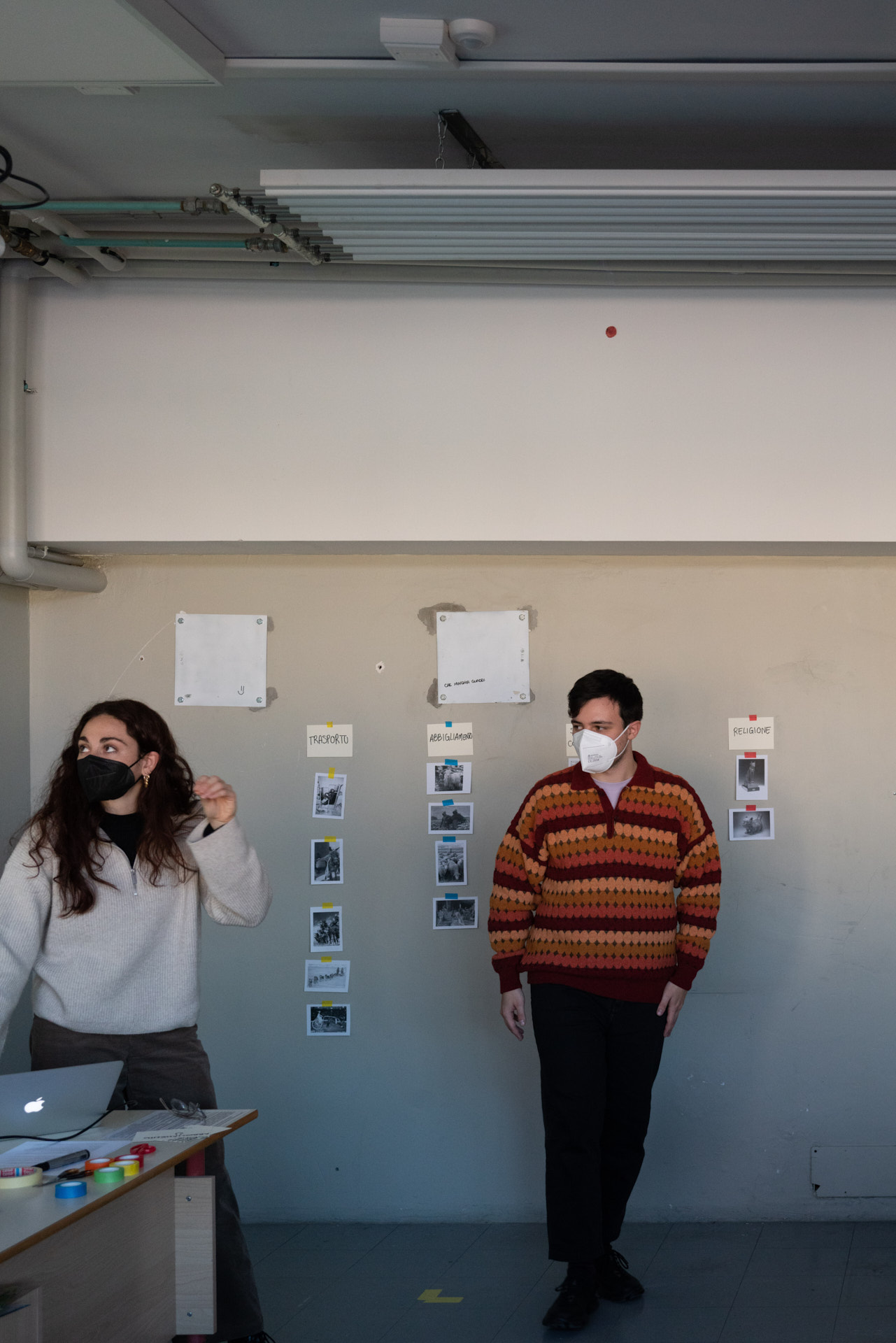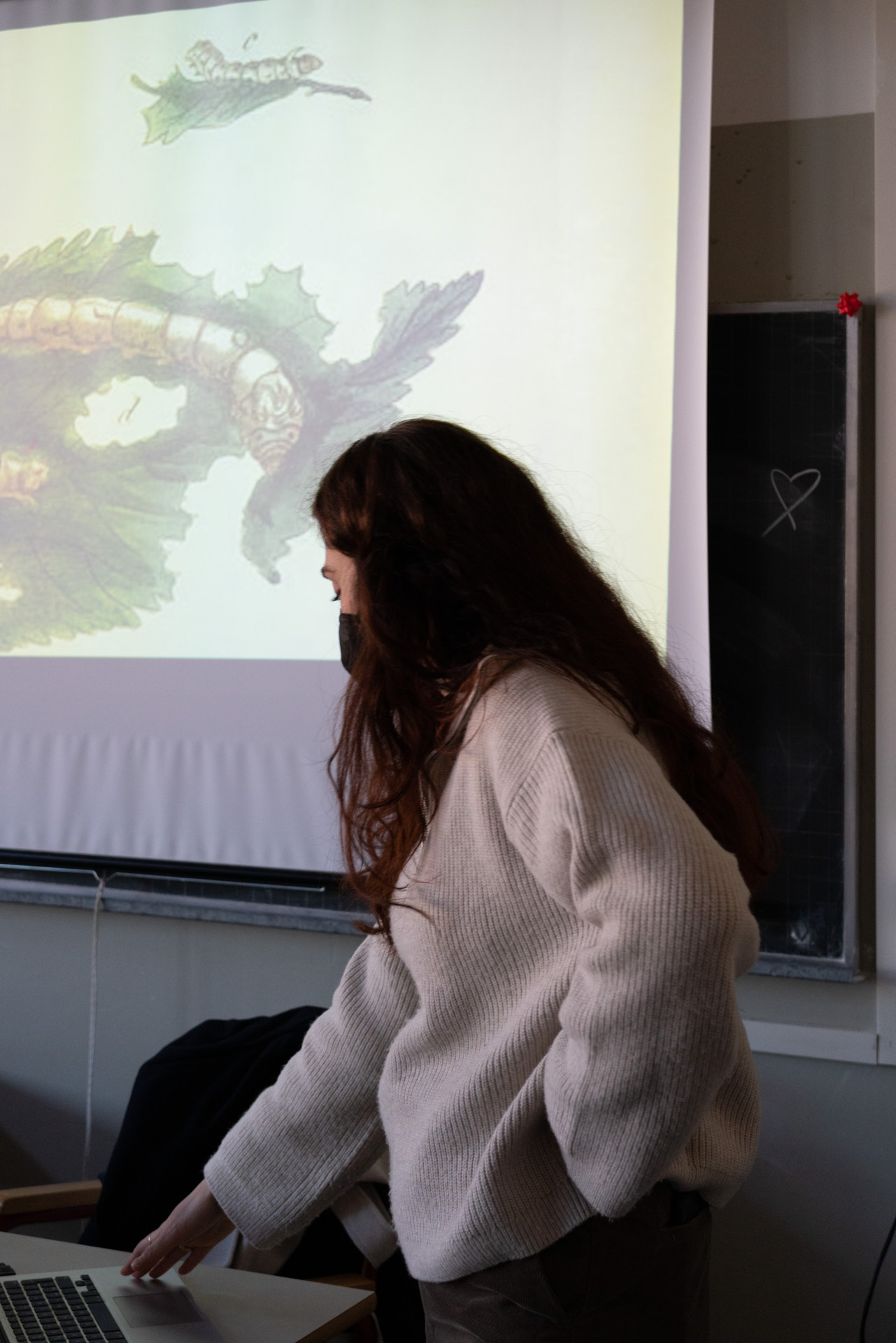Attorno alla domesticazione
I.S.I.S. Paolo Carcano, Como
Como Silk Museum and Regione Lombardia
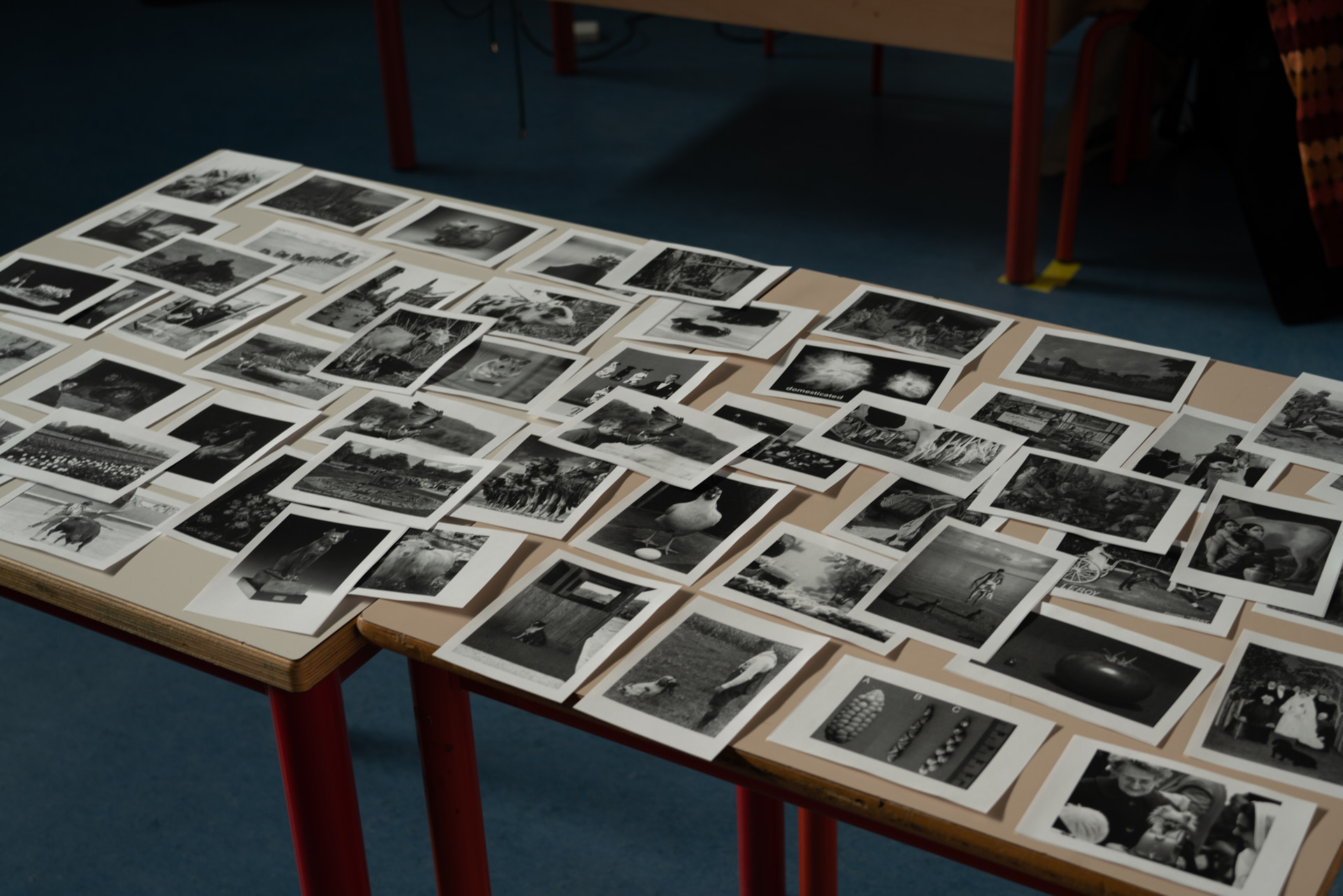
Meetings and workshops that, using the long history of the silkworm as a pretext, seek to lead participants to reflect on some of the pressing issues of contemporary life, such as
– the mutual support and thus the natural subsistence of inter- and intra-species relations
– the relationship between man and other species
– the role of man as an active agent of domestication
– man’s responsibilities towards other living beings
Moments of reflection, both theoretical and practical, that seek to stimulate children to think and see things from another point of view, to go beyond appearances and to deepen and build critical thinking on a topic.
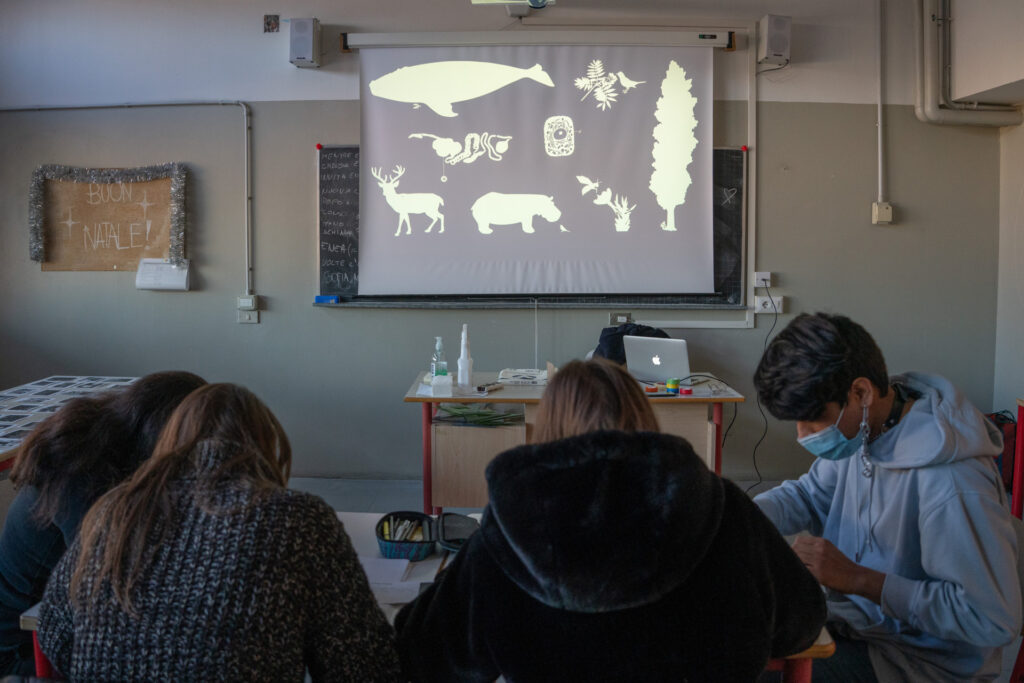
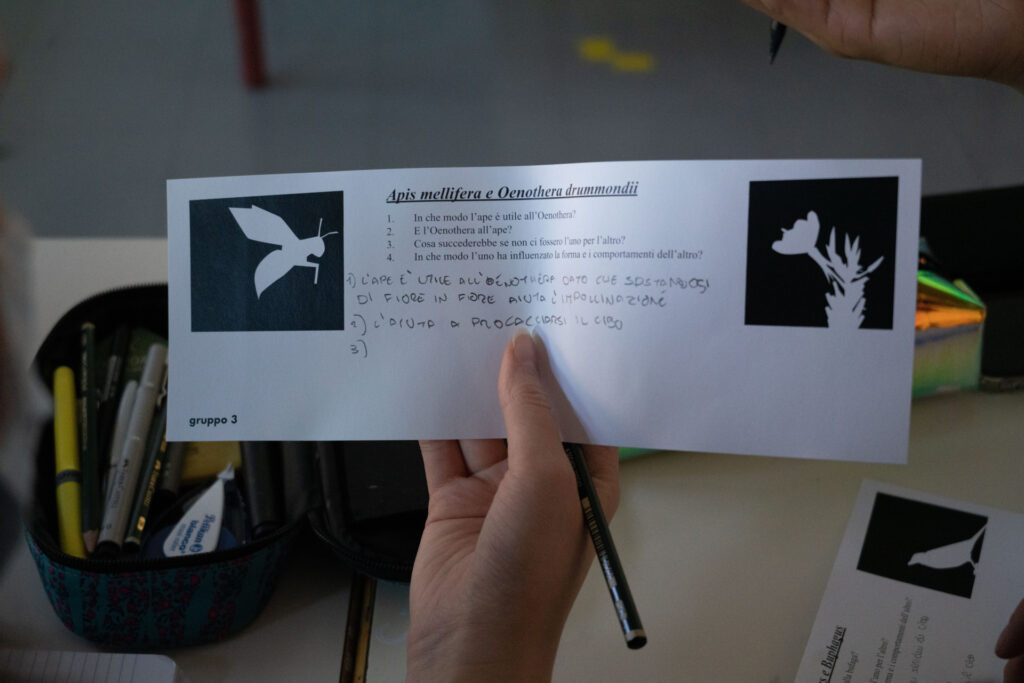
The meetings opened with a short presentation of the Sistemamanifesto group and the thesis paper on the silkworm: ‘Weaving to be. silkworm, designer and project’.
Through the words of Kropotkin, we introduced the theme of mutual support between animal, plant, fungal, bacterial and microorganism species; we invited the students, divided into groups, to think about a few pairs of living beings, trying to understand how they could be connected and helpful to each other. At the end of this first phase, with a moment of discussion in which we clarified any doubts and better explained some connections, we moved on to the second exercise, which we introduced thanks to the words of James Scott.
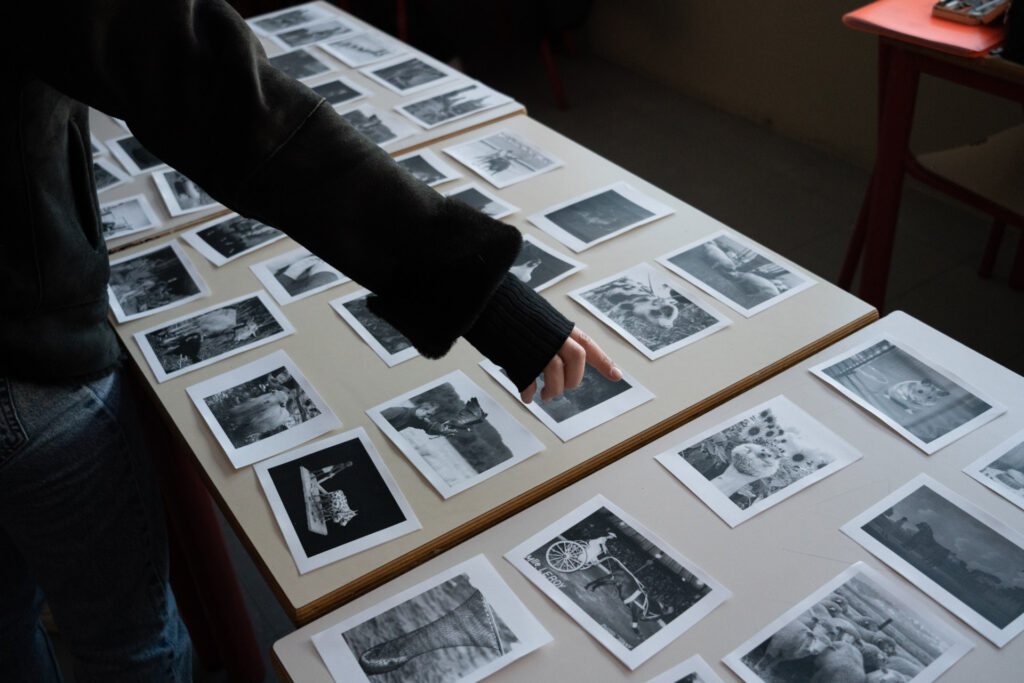
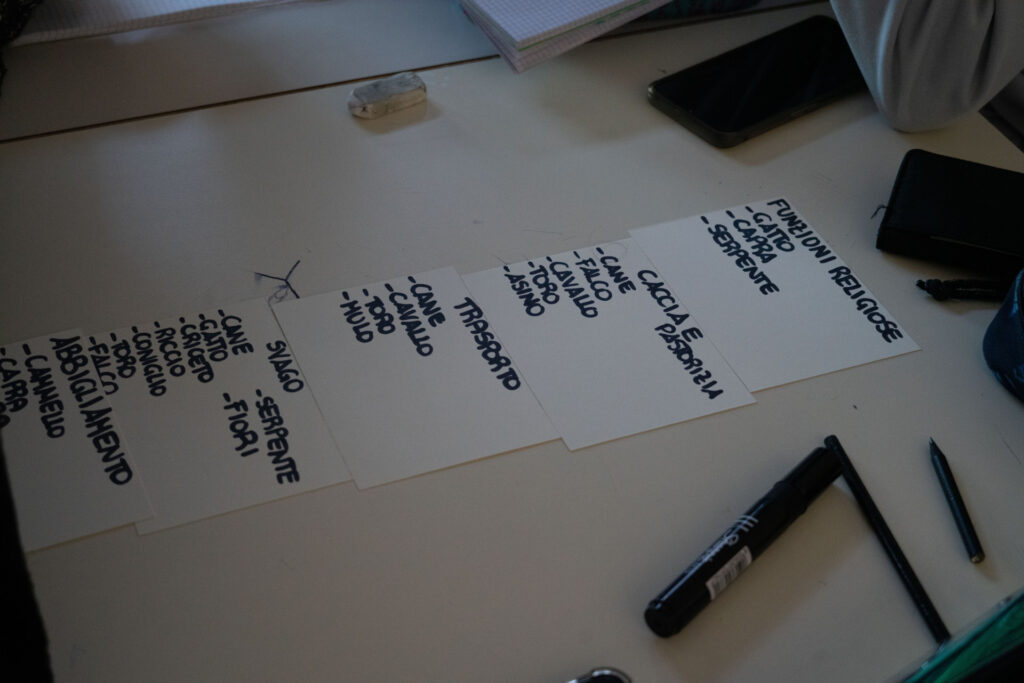
In this second phase, we then introduced the human figure as the dominant element capable of domesticating other living species according to its own needs. Thanks to a series of postcards depicting some animals and plants that have been domesticated by man over the centuries, we asked the students to identify some macro-categories, corresponding to the main reasons why man has domesticated.
The categories that emerged are:
– food/hunting
– clothing
– transport
– companionship / entertainment – religion
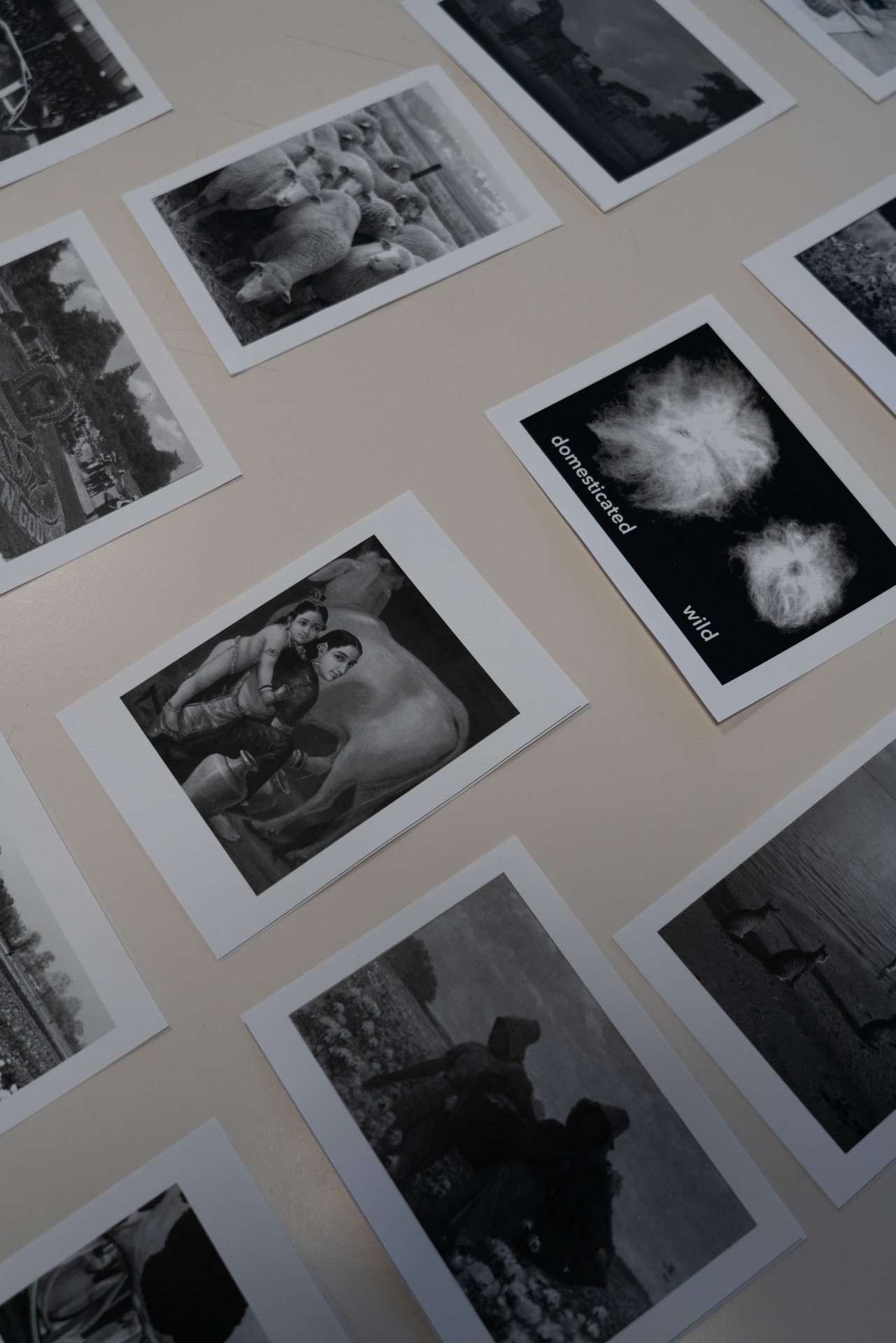
We then asked the students to hang these postcards on the wall, subdividing them according to the topics mentioned above.
When the second phase of our workshop was also over, we concluded the meeting with a short presentation in which we recounted the history of the silkworm, from its discovery to the latest experiments on new frontiers of collaboration between man and this insect.
